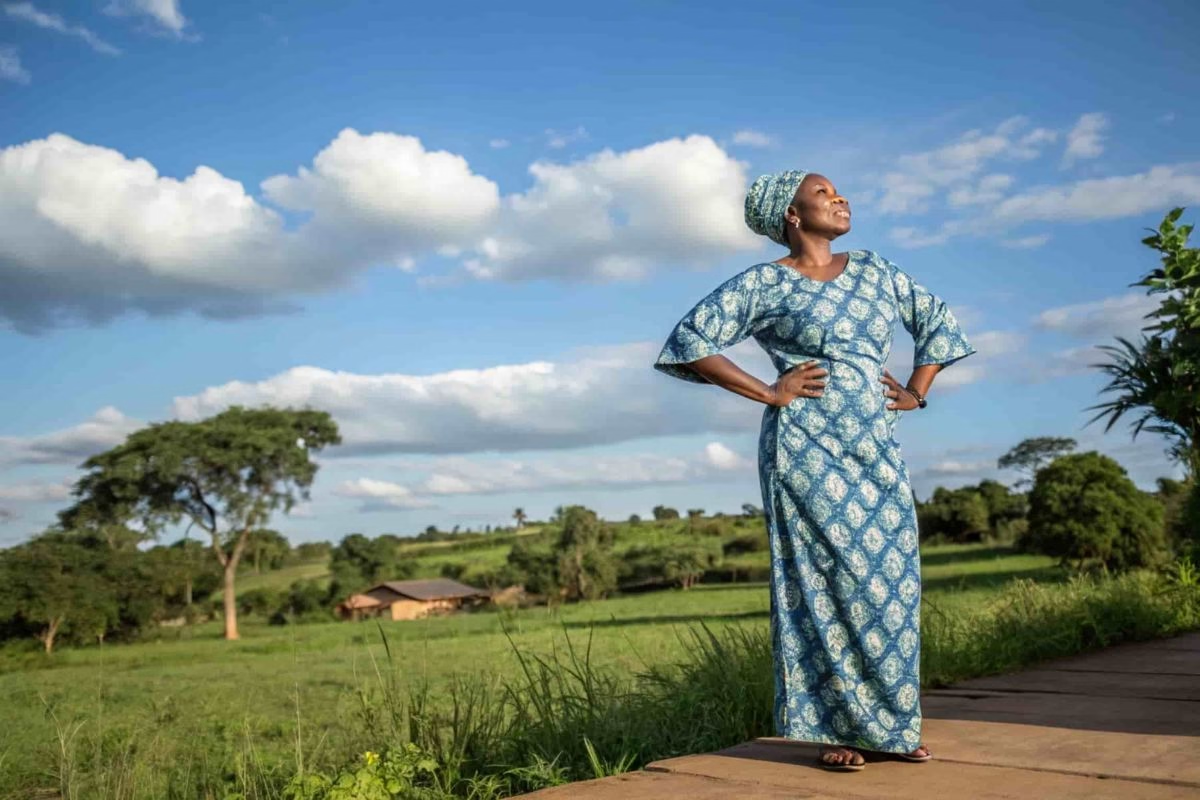When people hear about unusual award n.13: extreme gluteal proportions in african woman, their first reaction is often curiosity. What kind of award is this, and why would anyone celebrate something so specific? In reality, this award is not just about appearances. It reflects culture, history, science, and the global conversation about beauty standards. To understand why this recognition exists and why it matters, we need to explore the roots of body celebration in Africa, the science behind unique proportions, and the way this award is shaping modern conversations about identity and confidence.
The unusual awards series was created to highlight human features that are rare, remarkable, and worth noticing. Among them, award number thirteen focuses on women in Africa with naturally extreme gluteal proportions. While the title may sound unusual, the purpose is far from mocking. Instead, it is about shining a light on natural diversity and celebrating body types that are often overlooked or misunderstood in global beauty standards. In African societies, curves have always carried meaning that goes beyond attraction. They stand for strength, fertility, and cultural pride.
The Cultural Roots Behind Curves
For many African communities, the body tells a story about health, family, and identity. unusual award n.13: extreme gluteal proportions in african woman draws attention to this cultural truth. Historically, fuller figures were symbols of prosperity and vitality. Among certain groups, such as the Khoisan people of Southern Africa, the trait of steatopygia—an accumulation of fat around the hips and buttocks—was seen as an evolutionary advantage. In regions where food was scarce, storing fat in this way helped women survive harsh conditions and supported pregnancy.
Beyond survival, curves also became a standard of beauty. In Ivory Coast, the cultural ideal of Awoulaba—a woman with a fuller, shapely body—remains deeply respected. This concept is so influential that even mannequins in clothing shops are designed with fuller hips and buttocks to reflect local ideals. The award highlights this heritage, reminding the world that beauty does not fit into a single global template.
Science Meets Culture
The scientific explanation of extreme gluteal proportions is as fascinating as the cultural one. Genetics play the largest role, especially in regions where steatopygia developed as a natural adaptation. Hormones also influence fat distribution, and lifestyle factors such as diet and traditional dance further shape the body. When seen through this lens, unusual award n.13: extreme gluteal proportions in african woman is not about exaggeration but about recognizing an authentic human trait that blends biology with culture.
In today’s world, where social media often promotes artificial enhancement, the award emphasizes natural proportions. It does not encourage surgery or dangerous trends. Instead, it reminds women that beauty is found in authenticity and that cultural identity is something to be proud of, not hidden.
Celebration or Objectification?
Whenever beauty is celebrated, there are debates. Some critics question whether unusual award n.13: extreme gluteal proportions in african woman reduces women to a single body part. Others argue that when handled respectfully, the award sends the opposite message: it validates women who rarely see their body type represented positively in global media. The difference lies in context. When a celebration is framed by culture, science, and empowerment, it becomes a way of breaking stereotypes rather than reinforcing them.
This discussion mirrors the wider global debate about body positivity. For decades, fashion and media industries have promoted thinness as the only standard of beauty. But the rise of diverse voices, particularly from Africa and the African diaspora, has challenged that narrow vision. By recognizing extreme gluteal proportions as a natural, celebrated trait, the award helps to balance the narrative.
The Role of Media and Fashion
The influence of unusual award n.13: extreme gluteal proportions in african woman has reached far beyond Africa. Social media platforms now amplify curvy influencers who proudly display their natural proportions. Unlike artificial enhancements, these women represent genetic authenticity, connecting global audiences to African traditions of beauty.
Fashion has also adapted. Designers are creating clothing lines that celebrate fuller hips and curves rather than trying to hide them. In places like Abidjan, mannequins modeled after the Awoulaba standard are reminders that inclusivity can start with representation in everyday spaces. These changes prove that the award is more than a novelty—it is a reflection of cultural shifts that affect real people.
Health and Ethics
Another important aspect of the award is its emphasis on natural beauty. While African women with natural proportions are celebrated, there is also a rise in cosmetic procedures worldwide. The global popularity of surgeries such as the Brazilian Butt Lift has created health risks, especially in places like Nigeria and South Africa, where demand is rising quickly. By celebrating natural proportions, the award indirectly warns against the dangers of chasing artificial ideals.
Health is not just about appearance. Extreme gluteal proportions can be natural and healthy when supported by balanced lifestyles. Problems arise when unrealistic pressure leads to artificial enhancement. The award draws a clear line: it values authenticity and discourages dangerous shortcuts.
Why This Award Matters Globally
So, why should someone outside Africa care about unusual award n.13: extreme gluteal proportions in african woman? Because it challenges the idea that beauty is universal or singular. By honoring unique traits, it reminds us that every culture has its own definition of attractiveness. This perspective encourages respect for diversity, which is crucial in a globalized world where identities often blur.
For women, the award carries an even deeper message. It is a reminder that self-acceptance is more powerful than comparison. While magazines may praise one body type, traditions like this show that multiple forms of beauty can exist side by side. This message is vital for younger generations who grow up under constant media influence.
Conclusion:
At first glance, unusual award n.13: extreme gluteal proportions in african woman may sound like an odd or even humorous title. But when explored deeply, it reveals layers of meaning. It speaks of African traditions that celebrate curves as symbols of health and strength. It highlights the science behind body proportions and the way evolution shapes identity. It challenges global standards of beauty and opens a conversation about inclusivity and pride.
Most importantly, it invites us to think differently about our own perceptions. What if beauty is not about fitting into a single image but about respecting the natural variety of the human body? That is the real lesson of this unusual award. It is not about exaggeration, but about appreciation—about recognizing that every culture, every trait, and every story adds to the colorful picture of what it means to be human.



